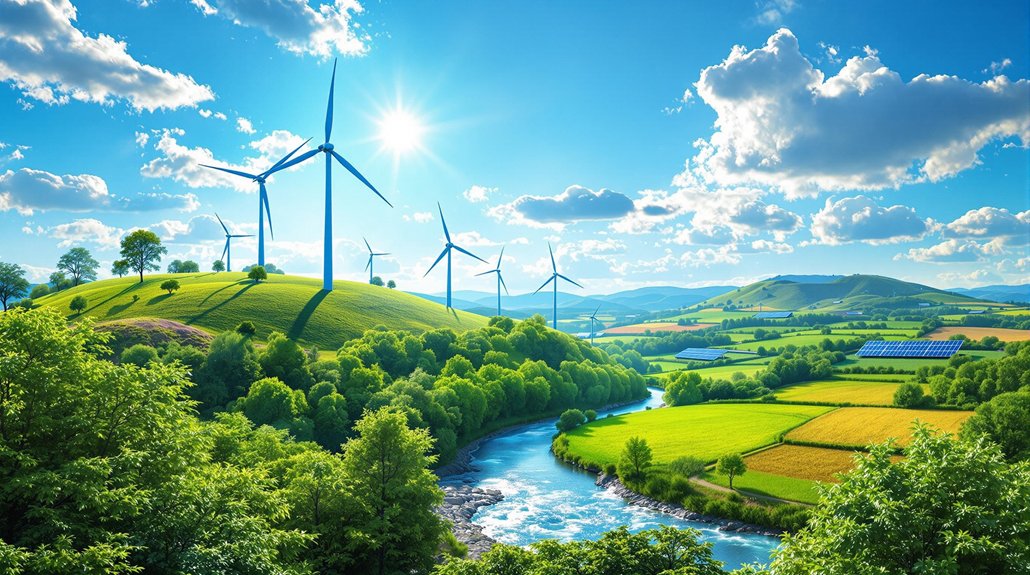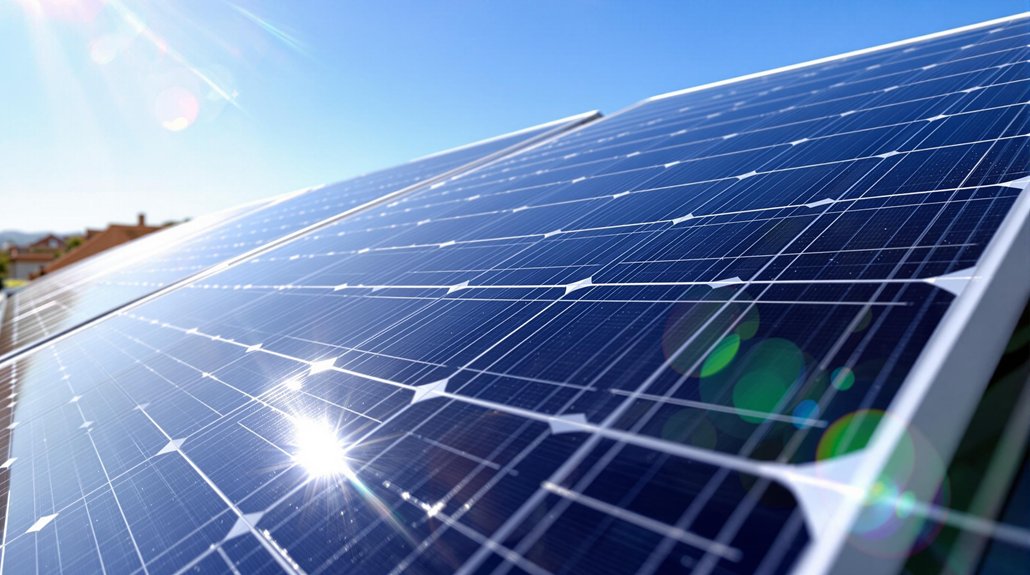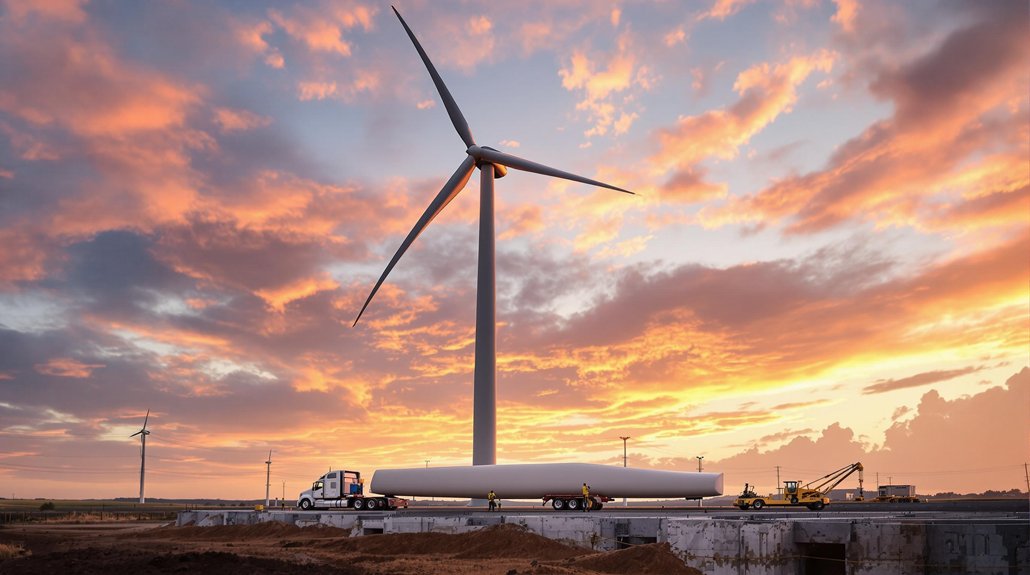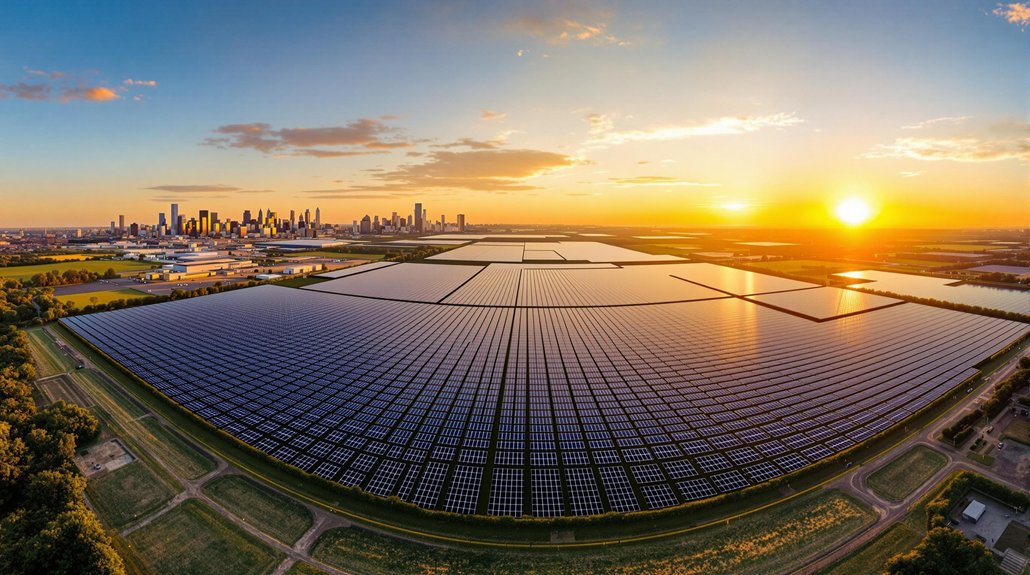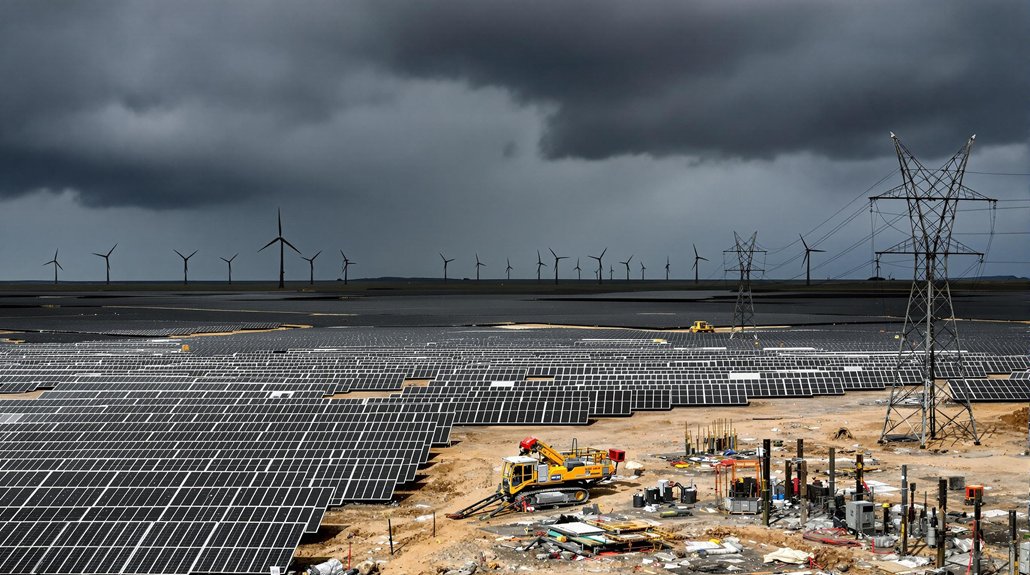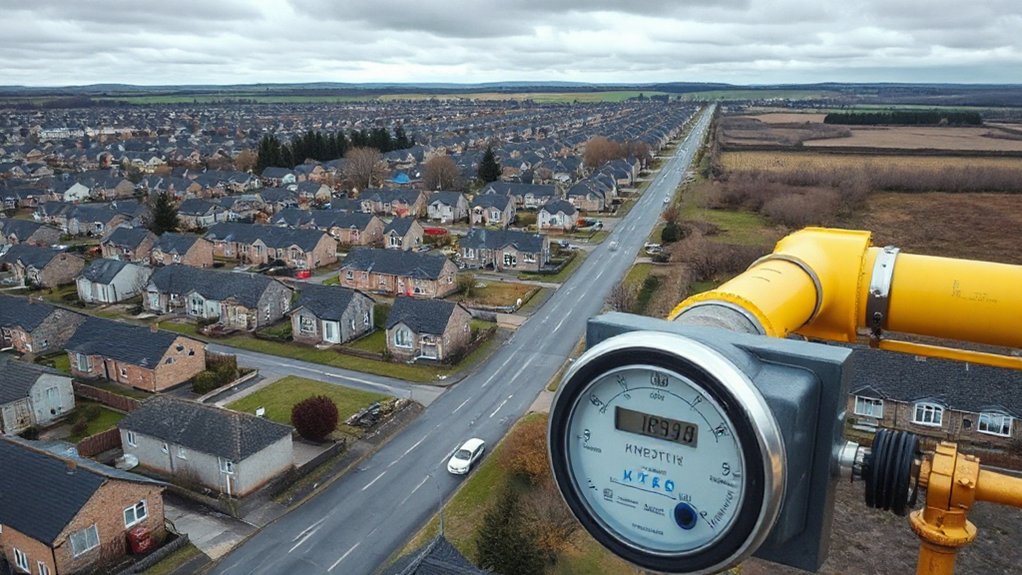Renewable natural resources like solar, wind, water, and biomass are key to a sustainable future. They naturally replenish over time, unlike finite fossil fuels. Solar capacity reached 760 GW in 2020, while wind power grew to 743 GW. Hydropower remains the largest renewable electricity source at 1,330 GW. Proper management balances use with natural regeneration rates. The path forward depends on these resources’ continued development.
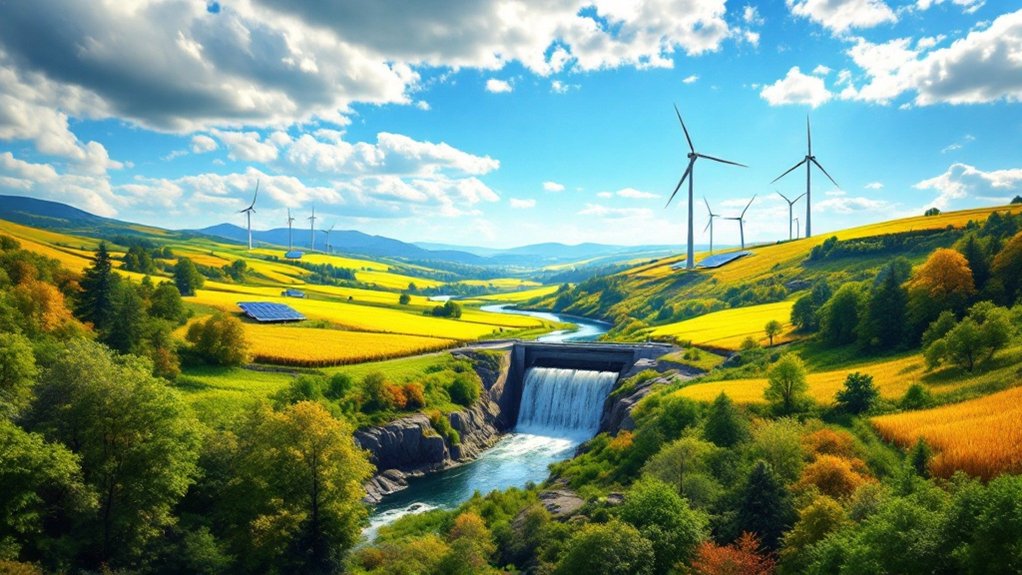
While the world faces growing concerns about resource depletion, renewable natural resources offer sustainable solutions to meet humanity’s needs. These resources naturally replenish over time and include sunlight, wind, water, forests, soil, plants, and animals. Unlike fossil fuels and minerals, which will eventually run out, renewable resources can provide for humans indefinitely if managed properly. They’re classified as perpetual, renewable, or potentially renewable, depending on how quickly they regenerate.
Solar energy stands out as an abundant and inexhaustible resource. Photovoltaic cells convert sunlight directly into electricity, while solar thermal systems use the sun’s heat for water and space heating. Global solar capacity reached 760 GW in 2020, with costs dropping by 82% between 2010 and 2019, making it increasingly affordable.
The sun provides unlimited, increasingly affordable energy through both electrical and thermal applications.
Wind power is the fastest-growing renewable energy source worldwide. Wind turbines convert the kinetic energy of moving air into electricity through large-scale onshore and offshore wind farms. By 2020, global wind capacity reached 743 GW, providing about 6% of global electricity production. These renewable energy sources are critical for greenhouse gas reduction and achieving global sustainability targets.
Hydropower remains the largest source of renewable electricity globally. This technology uses flowing water to spin turbines and generate power through run-of-river, storage, and pumped storage systems. With a global capacity of 1,330 GW in 2020, hydropower accounts for 16% of global electricity production.
Biomass energy comes from organic materials like wood, agricultural residues, and waste. These materials can produce heat, electricity, and liquid biofuels for transportation. Bioenergy capacity reached 145 GW globally in 2020 and provides 10% of the world’s primary energy supply. Biomass represents a critical renewable option with low carbon footprint when managed sustainably.
Geothermal energy taps into Earth’s internal heat for electricity generation and direct heating applications. Though current capacity is only 14 GW, experts believe geothermal could provide 8.3% of global electricity by 2050.
Sustainable management of these resources requires careful balancing of use and natural replenishment rates. This involves conservation practices, efficiency improvements, and ecosystem protection to guarantee these valuable resources remain available for future generations. The preservation of biodiversity in ecosystems is essential for maintaining the resilience and productivity of renewable natural resources.
Frequently Asked Questions
How Can Individuals Contribute to Sustainable Use of Renewable Resources?
Individuals can make daily choices that support renewable resources.
They’re reducing energy use with efficient appliances and better insulation. Many are conserving water through low-flow fixtures and fixing leaks quickly.
Some are choosing locally-grown food and eating more plant-based meals. Others are installing solar panels or selecting renewable energy plans.
Small actions at home create significant environmental benefits when widely adopted.
What Policies Promote Renewable Resource Conservation Worldwide?
Global policies promoting renewable resource conservation include international treaties like the Paris Agreement and Montreal Protocol.
Many nations implement Renewable Portfolio Standards and offer tax incentives for clean energy. Market-based approaches such as carbon taxes and cap-and-trade systems are gaining popularity.
Protected areas preserve wildlife habitats, while sustainable management practices help forests and water resources.
Green bonds fund eco-friendly projects worldwide.
How Do Economic Factors Influence Renewable Resource Management?
Economic factors heavily influence how renewable resources are managed. Market prices determine if companies invest in renewables or stick with cheaper options. Government subsidies make green energy more competitive.
High startup costs often delay renewable projects. When fossil fuels are cheap, interest in alternatives drops.
Consumer demand for eco-friendly products pushes companies to adopt sustainable practices. Financial returns, both short and long-term, guide business decisions about resource use.
Can Depleted Renewable Resources Be Fully Restored?
Depleted renewable resources can often be restored, but full recovery isn’t guaranteed. Many success stories exist—Atlantic cod stocks rebounding after fishing bans and forests regenerating after replanting efforts.
However, challenges like climate change, biodiversity loss, and pollution can limit restoration. While wetlands, fisheries, and forests show remarkable resilience when given time to heal, some ecosystems may never return to their original state despite human intervention.
How Does Climate Change Affect Renewable Natural Resource Availability?
Climate change is drastically altering renewable resource availability worldwide.
Rising temperatures are shifting where crops can grow and forcing fish to migrate to cooler waters.
Forests face increased threats from wildfires, pests, and extreme weather.
Water resources are strained by changing rainfall patterns and droughts.
Ocean acidification damages marine ecosystems.
These changes aren’t temporary – they’re reshaping how, when, and where humans can access essential natural resources.
